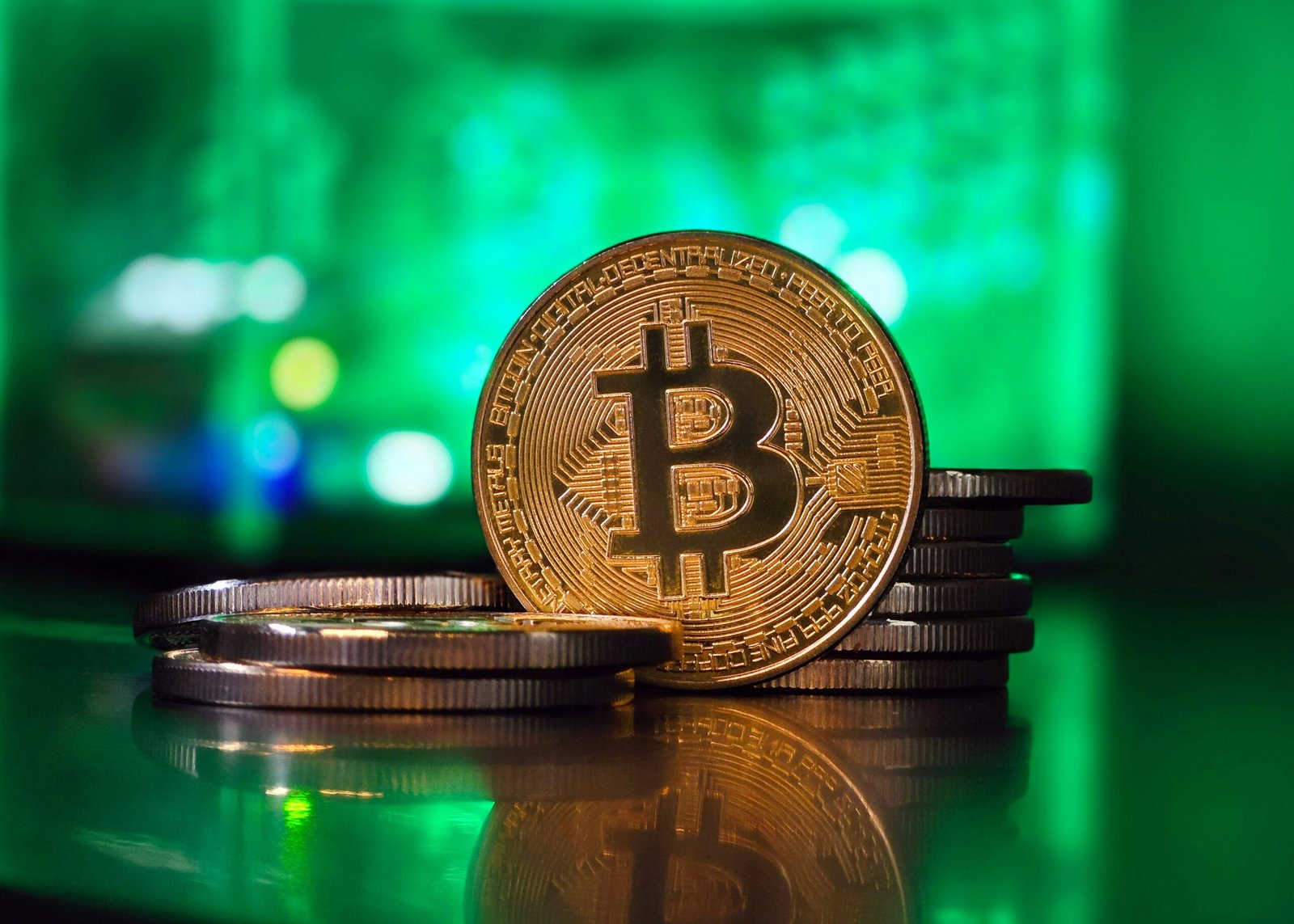Understanding the Surge: Why Bitcoin Prices Are Reaching New Heights

Bitcoin, the pioneering cryptocurrency launched in 2009, has experienced notable fluctuations in its market value over the years. From its humble beginnings, where it was virtually worthless, to its meteoric rise to thousands of dollars, Bitcoin’s price journey has been both intriguing and captivating. The last few years have witnessed record highs, pulling the attention of mainstream investors, financial institutions, and users alike. As we venture into the 2020s, Bitcoin’s valuation has made headlines, continuously breaking its records and reshaping perceptions about digital currencies.
During the early 2010s, Bitcoin began to establish itself as an alternative asset class, rapidly gaining traction among tech enthusiasts and later, speculators. The notorious price peaks and valleys during these formative years educated investors on the inherent volatility associated with cryptocurrencies. The gradual transition from a niche market to a significant player in global finance saw Bitcoin reaching unprecedented price levels, especially during major events like the 2017 bull run, which saw Bitcoin pricing escalate to nearly $20,000 before retreating dramatically.
Fast-forward to the end of 2020 and into 2021, Bitcoin began to attract considerable institutional interest, significantly influencing its price trajectory. With corporations and hedge funds investing heavily in Bitcoin, the narrative evolved from that of a speculative asset to a legitimate store of value akin to digital gold. The ensuing bullish trend resulted in prices surging past $60,000, with several factors driving this momentum, including increased adoption, improved regulatory clarity, and a growing understanding of the cryptocurrency ecosystem. This section lays the groundwork for examining the various elements that have contributed to the recent explosive growth in Bitcoin’s price and what it may signify for the future of this digital asset.
Market Sentiment and Investor Psychology
The dynamics of market sentiment and investor psychology play significant roles in the fluctuations of bitcoin prices. Emotional trading is a phenomenon where traders make decisions influenced more by their feelings rather than by analytical assessments. This impulsive behavior can lead to sudden surges or drops in bitcoin values. For instance, when investors perceive positive bitcoin news—as seen in endorsements from major corporations or favorable regulatory developments—they may experience heightened optimism, prompting them to buy impulsively. This influx of capital can drive prices to new heights.
Furthermore, the fear of missing out (FOMO) is a powerful motivator that affects various markets, with bitcoin being no exception. As investors observe others profiting from rising bitcoin prices, the desire to share in this success can lead to herd behavior. FOMO often amplifies upward price movements, as large groups of investors rush to acquire Bitcoin, fearing they might miss a lucrative opportunity. This behavior contributes to rapid increases in trading volume, creating a self-reinforcing cycle of demand and price escalation.
Additionally, social media serves as a formidable influencer in shaping public perception and sentiment regarding Bitcoin. Platforms such as Twitter, Reddit, and various financial news outlets can amplify opinions, news, and even rumors about the cryptocurrency market. When a positive sentiment about Bitcoin is propagated through these channels, it can lead to increased interest among potential investors. Conversely, negative news can trigger panic selling, causing sharp price declines. The interplay between social media interactions and market sentiment not only reflects but also molds investor psychology, leading to pronounced effects on bitcoin pricing dynamics.
Institutional Adoption and Investment
The growing trend of institutional adoption of Bitcoin signifies a shift in the perception of digital currencies as serious investment vehicles. Historically, cryptocurrencies were often viewed as speculative assets dominated by retail traders. However, recent moves by major institutions reveal a newfound confidence in Bitcoin’s potential long-term value. Companies like MicroStrategy and Tesla have made headlines for their significant investments in Bitcoin, signaling to the market that corporate treasuries can safely allocate a portion of their reserves to this digital asset.
MicroStrategy’s early and aggressive accumulation of Bitcoin, along with its commitment to continue purchasing more, has established a precedent for other corporations. This move not only diversifies their investment strategies but also lends credibility to Bitcoin as a legitimate store of value. Similarly, Tesla’s entry into the Bitcoin market, where it purchased $1.5 billion worth, has caught the attention of investors and analysts alike, driving demand and, consequently, prices higher. Such large-scale acquisitions by reputable companies have helped mitigate perceptions of volatility, making Bitcoin more attractive to other institutional players.
Investment funds have also begun embracing Bitcoin, further contributing to its ascendance in the financial ecosystem. The introduction of Bitcoin-focused funds and the approval of Bitcoin futures products have facilitated greater access for institutional investors. As more pension funds and hedge funds consider Bitcoin as a distinct asset class, the capital inflows are likely to continue boosting its market valuation. The involvement of these institutional actors not only enhances liquidity but also instills a sense of trust among average investors, thereby fostering broader acceptance of Bitcoin as a transformative financial instrument.
Regulatory Developments and Market Dynamics
The landscape of cryptocurrency has been significantly shaped by regulatory developments, which in turn have influenced market dynamics, especially regarding Bitcoin. As governments around the world have begun to clarify their stance on digital currencies, these regulations have the potential to lead to increased institutional investment. A more defined regulatory framework can mitigate the risks associated with uncertainties in the market, fostering confidence among institutional investors. Consequently, this could result in a more stable influx of capital into Bitcoin and other cryptocurrencies.
In recent years, global regulatory bodies have recognized the importance of digital currencies and the need for regulation to protect consumers and enhance market integrity. Regulatory measures addressing anti-money laundering (AML) and know-your-customer (KYC) requirements are becoming commonplace. As these measures are adopted, they can bolster public trust, making Bitcoin a more attractive investment for institutions that might have previously hesitated due to compliance concerns.
Additionally, recent legislative actions in major economies, such as the United States and the European Union, have played a pivotal role in shaping market perceptions. For example, the introduction of clearer tax guidelines and the recognition of cryptocurrencies as assets have empowered organizations to engage in Bitcoin trading more confidently. This not only enhances market participation but also يؤدي إلى a rise in Bitcoin’s price due to increased demand.
Moreover, regulatory clarity ensures a level playing field for all market participants, resulting in improved liquidity and reduced volatility. These attributes are attractive to institutional investors, leading to a more mature market environment. As Bitcoin continues to gain stature within the financial ecosystem, the influence of ongoing regulatory developments will undoubtedly play a crucial role in its continual ascent in value.
Global Economic Factors and Inflation Hedge
The recent surge in Bitcoin prices can be significantly attributed to the prevailing global economic conditions, particularly the rising concerns surrounding inflation and the consequent monetary policies adopted by various governments. In an era characterized by unprecedented monetary expansion and fluctuating economic stability, investors have increasingly turned to Bitcoin as a viable alternative to traditional fiat currencies.
Inflation, defined as the rate at which the general level of prices for goods and services rises, leads to a decrease in purchasing power. When consumers perceive that their money may lose value over time due to inflation, they often seek assets that can retain their worth. Bitcoin, often referred to as “digital gold,” has emerged as a compelling option for hedging against inflation. Its finite supply, capped at 21 million coins, contrasts sharply with the unlimited potential of fiat currency printing. This scarcity propels its perceived value, particularly in inflationary environments where currencies face devaluation.
Additionally, central banks around the world have adopted loose monetary policies, characterized by low interest rates and large-scale asset purchases. Such policies, while aimed at stimulating economic growth, can exacerbate inflationary pressures, leading to a loss of confidence in conventional monetary systems. In response, savvy investors have flocked to Bitcoin, viewing it as a store of value that can safeguard their wealth against the unpredictable dynamics of traditional markets.
Moreover, the COVID-19 pandemic has intensified these trends, with governments introducing significant stimulus measures. The resulting economic uncertainty has further fueled interest in Bitcoin, as individuals and institutions alike increasingly perceive the cryptocurrency as a robust asset that offers not only protection against inflation but also the potential for substantial returns. As Bitcoin continues to gain traction among investors as an inflation hedge, its value is likely to rise in response to these global economic factors.
Technological Developments and Upgrades
The landscape of Bitcoin continues to evolve significantly, primarily due to technological advancements that enhance its functionality and utility. One of the most noteworthy upgrades in recent times is the Taproot implementation, which was activated in November 2021. This upgrade introduced improved privacy features and enhanced smart contract capabilities to the Bitcoin network. By making transactions more complex yet efficient, Taproot increases the possibilities for developers and users alike and positions Bitcoin as a more versatile platform for various applications.
Taproot works in conjunction with a new signature scheme called Schnorr signatures, which allow multiple signatures to be combined into a single signature. This reduction in data not only improves efficiency but also enhances transaction privacy. Consequently, this fosters a perception of Bitcoin as a safer and more user-friendly investment, attracting both individual and institutional investors who prioritize security and privacy in digital assets.
Furthermore, the advancements in the Lightning Network also contribute significantly to Bitcoin’s potential. This second-layer solution enables faster transaction speeds and lower fees, making Bitcoin more practical for everyday transactions. As the adoption of the Lightning Network expands, Bitcoin becomes more competitive against traditional payment methods. Such developments reinforce the idea that Bitcoin is not merely a speculative asset but a functional currency capable of facilitating real-world economic activity.
In addition to these incremental improvements, the Bitcoin ecosystem is supported by an active community of developers who continuously work on creating tools, wallets, and exchanges that contribute to a more intuitive user experience. The overall tech-savvy environment surrounding Bitcoin boosts the interest of investors and maximizes the asset’s market potential. Ongoing technological developments are key drivers propelling Bitcoin prices to unprecedented heights.
Market Liquidity and Supply Constraints
The dynamics of Bitcoin pricing are largely dictated by market liquidity and the constraints imposed on its supply. One of the most significant mechanisms affecting Bitcoin’s supply is the halving event, which occurs approximately every four years. During a halving, the reward for mining Bitcoin transactions is cut in half, consequently reducing the rate at which new Bitcoins are introduced into circulation. This diminutive introduction of new coins constricts the overall supply, making Bitcoin scarcer. In a market where demand continues to grow, this limitation on new bitcoin can create upward pressure on prices.
Increased demand can stem from various factors, including growing institutional interest, larger retail investments, and the adoption of Bitcoin as a legitimate means of transaction or store of value. Consequently, as more investors enter the market, the liquidity – the ease with which Bitcoin can be bought or sold without causing significant price fluctuations – becomes a critical component of price dynamics. When liquidity is high, it indicates a robust market with ample buyers and sellers, which helps to stabilize prices. Conversely, during times of lower liquidity, even a modest increase in demand can lead to significant price spikes as there are fewer available bitcoins to accommodate the interest.
The relationship between supply constraints and market liquidity illustrates why Bitcoin can experience such volatility. When the market anticipates a halving, often months in advance, speculation drives up demand, leading to a surge in the price. Furthermore, when liquidity becomes constrained, even a small uptick in demand can result in dramatic price increases. This is particularly evident during bull markets, where the intersection of limited supply and robust demand tends to propel Bitcoin prices to unprecedented levels.
Comparison with Traditional Assets
In recent years, Bitcoin has been increasingly compared to traditional assets such as gold and stocks, as investors seek to understand its role within the broader financial ecosystem. As a digital asset class, Bitcoin offers unique characteristics that differentiate it from conventional investments. One prominent difference is its decentralized nature, which contrasts with the centralized control typically seen in traditional financial systems. This feature offers an alternative for investors looking for asset diversification, particularly during times of economic uncertainty.
Historically, gold has been viewed as a safe-haven asset; it is often utilized by investors to hedge against inflation and economic volatility. Similar to gold, Bitcoin is perceived by many as a store of value, particularly as its supply is finite, with only 21 million bitcoins to ever be mined. This scarcity can drive demand, especially when market participants view inflation as a threat to their purchasing power. Thus, when traditional markets experience downturns, investors may flock to Bitcoin, driving its value upward and reinforcing its appeal as an asset comparable to gold.
Moreover, Bitcoin’s performance during market fluctuations has caught the attention of institutional investors. While traditional stocks often react to economic indicators and corporate earnings, Bitcoin’s price can be influenced more by sentiment and media coverage. This influence can lead to significant price movements within short periods, providing both opportunities and risks. However, its relatively newer presence in the financial market means that it is still subject to extreme volatility compared to stocks and bonds, which have longer histories and more established trading patterns.
As investors continue to explore Bitcoin’s potential, it is essential to recognize its unique position within the asset class hierarchy. When analyzed alongside traditional assets, Bitcoin presents an intriguing option for diversifying investment portfolios and may continue to establish itself as a significant player in the financial landscape.
Future Predictions and Trends
The Bitcoin market, known for its volatility and rapid price shifts, increasingly captures the attention of investors and analysts alike as it continues to reach new heights. Predictions about Bitcoin’s future often focus on potential price trajectories, driven by a variety of factors including market adoption, regulatory changes, and technological advancements. Analysts suggest that if the trend of institutional investment continues, Bitcoin may see even higher price levels. Companies like MicroStrategy and Tesla have set a precedent that could lead more corporations to add Bitcoin to their balance sheets, resulting in increased demand and, consequently, a potential surge in prices.
Emerging trends are also pivotal in shaping the future of Bitcoin. The rise of decentralized finance (DeFi) and non-fungible tokens (NFTs) showcases the growing acceptance of blockchain technology as a whole. Many believe that as these platforms expand, they will draw more users to the Bitcoin ecosystem, further solidifying its standing as a leading cryptocurrency. Furthermore, advancements in Bitcoin’s scalability, particularly through technologies like the Lightning Network, may enhance transaction speeds and lower fees, making it more appealing for everyday transactions.
However, potential challenges loom on the horizon. Regulatory scrutiny regarding the use of Bitcoin and the environmental concerns tied to its mining process may impede its growth. Analysts indicate that how governments respond to these issues will significantly influence future Bitcoin prices. Furthermore, market dynamics such as supply and demand disruptions, driven by changes in investor sentiment and macroeconomic variables, could create volatility. Therefore, while many forecasts suggest a bullish outlook for Bitcoin, it is clear that traders and investors must navigate a landscape filled with both opportunities and risks. Understanding these emerging trends will be essential for those seeking to make informed decisions in the Bitcoin market.









